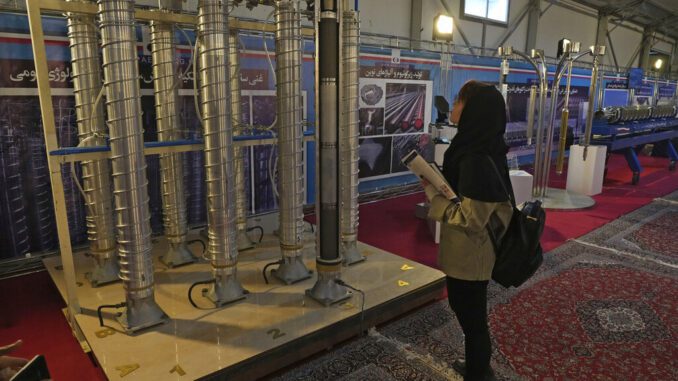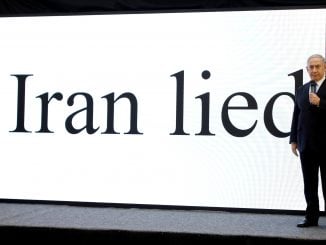
VIENNA — Inspectors from the United Nations nuclear watchdog found uranium particles enriched up to 83.7% in Iran’s underground Fordo nuclear site, a report seen Tuesday by The Associated Press said.
The confidential quarterly report by the Vienna-based International Atomic Energy Agency distributed to member states likely will raise tensions further between Iran and the West over its program. That’s even as Tehran already faces internal unrest after months of protests and Western anger over sending bomb-carrying drones to Russia for its war on Ukraine.
The IAEA report described inspectors discovering on Jan. 21 that two cascades of IR-6 centrifuges at Iran’s Fordo facility had been configured in a way “substantially different” to what had been previously declared. The IAEA took samples the following day, which showed particles up to 83.7% purity, the report said.
“Iran informed the agency that ‘unintended fluctuations’ in enrichment levels may have occurred during the transition period,” the IAEA report said. “Discussions between the agency and Iran to clarify the matter are ongoing.”
A spokesman for Iran’s civilian nuclear program, Behrouz Kamalvandi, sought to portray any detection of uranium particles enriched to that level as a momentary side effect of trying to reach a finished product of 60% purity. However, experts say such a great variance in the purity even at the atomic level would appear suspicious to inspectors.
Iran has been producing uranium enriched to 60% purity — a level for which nonproliferation experts already say Tehran has no civilian use. The IAEA report put Iran’s uranium stockpile as of Feb. 12 at some 8,289 pounds — an increase of 192 pounds since its last quarterly report in November. Of that, 192 pounds is enriched up to 60% purity.
Uranium at nearly 84% is almost at weapons-grade levels of 90% — meaning any stockpile of that material could be quickly used to produce an atomic bomb if Iran chooses.
While the IAEA’s director-general has warned Iran now has enough uranium to produce “several” nuclear bombs if it chooses, it likely would take months more to build a weapon and potentially miniaturize it to put it on a missile.
“We don’t believe that the supreme leader in Iran has yet made a decision to resume the weaponization program that we judge they suspended or stopped at the end of 2003,” CIA Director Williams Burns told CBS’ “Face the Nation” program. “But the other two legs of the stool, meaning enrichment programs, they’ve obviously advanced very far.”
Any explanation from Iran, however, likely won’t be enough to satisfy Israel, Iran’s regional archrival. Already, Israel’s recently reinstalled Prime Minister Benjamin Netanyahu has threatened military actions against Tehran. And Israel and Iran have been engaged in a high-stakes shadow war across the wider Middle East since the nuclear deal’s collapse.



